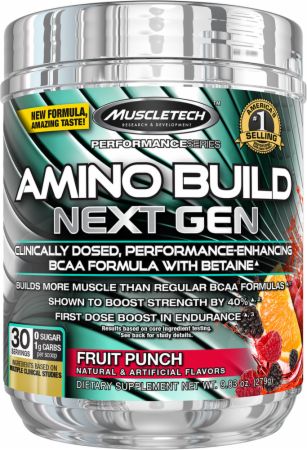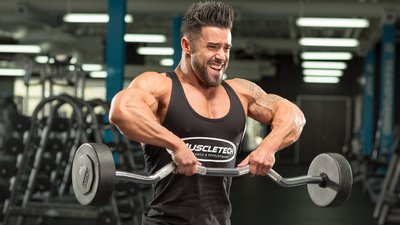The mind-muscle connection: Everybody talks about it, and every lifter knows it can help them lift stronger, grow bigger, and build their body the way they want it, but it's not always easy to find!
If you're someone who struggles to "feel" the right muscles working during key movements, listen up. The secret to unlocking the potential of one muscle group could be hiding its antagonist—the muscle which directly opposes it. Antagonist supersets have been around for years—heck, even Arnold trained chest and back on the same day—and they are as popular as ever among today's fitness elite.
MuscleTech athlete and IFBB pro Santi Aragon recently shared his secret to building a bigger, stronger chest—working in unexpected back and bicep exercises to promote greater gains and keep his physique balanced.
"As of late," says Aragon, "I've been doing antagonist splits for certain muscle groups, like doing biceps after my chest workout, to move blood around and to stimulate an additional muscle group."
Fellow MuscleTech athlete and Team Bodybuilding.com athlete Abel Albonetti also sees the value of working in opposition. When discussing his biceps and triceps, Albonetti says it's crucial to use one muscle to fully engage the other.
"By flexing your triceps at the bottom of the curl, it ensures you're fully extending the biceps," he explains.
And after a few reps with that full stretch working, you'd better believe you'll feel your biceps working more.
Here are a few suggestions to mix up your split routine and take advantage of antagonist training. Use these supersets to create a better mind-muscle connection—and build a bigger, stronger, more balanced physique!

Heavy Chest with Light Row: Whether you use push-ups or bench press, supersetting polar-opposite big muscles like chest and back guarantees increased blood flow to each muscle group and improves overall upper-body strength and hypertrophy. Powerlifters are known to superset low-rep bench work with high-rep band pull-aparts, for example. This will help you get your shoulders in a better position, control your shoulder blades during the bench, and activate everything you need to be a bigger bencher.
Dumbbell Press with Chin-ups: Looking for a one-stop upper-body solution? You couldn't do much better than this. The combination of hanging and upper-back work from the chin-ups can improve your overhead mobility, while also providing a solid, active base to press from. Both exercises will play off of each other, enabling you to do more quality work—and earn both functional strength, and a serious upper-body pump.
Squats with Hamstring Curls: Most people are quad-dominant in their squats, so why not superset with the hamstring curl to even things out? Plenty of lifters find this combination benefits both their big lifts and their big-muscle aesthetics. A similarly awesome pairing is heavy front squats with light, high-rep hip thrusts. Your squat form will be better and stronger, but the next day, you'll be a walking, talking leg day meme.
Leg Extensions with Leg Curls: This is a classic pairing, but if you're currently doing them as straight sets, consider alternating instead. With both muscle groups firing like crazy, you'll "feel" these moves like you never have before.
Calf Work with Weighted Dorsiflexion: This one may be a step too far for some of you, but I stand by my high school athletic trainer who stressed the importance of strengthening the shin muscles to ward off shin splints. It may not help you with your full-body aesthetics, but it will keep your lower legs balanced so you can thrash your calves in the gym.

